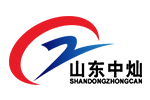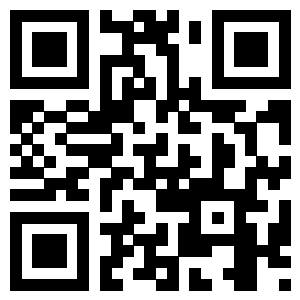版权所有 © 2018 山东中灿 ICP备案号:鲁ICP备16001552号-1 网站建设:中企动力 济南二分
ABOUT US
Tel: 0086-538-6315517
Fax: 0086-538-6315510
Phone:0086-15588577955
Adress:Hi-Tech Development Zone,
Feicheng,Taian,Shandong ,China.
E-mail:ella@zhongcansteel.com
PRODUCTS
websites
0086-538-6315517
Service Hotline
Important points for installation and use of color coated board
installation
The surface of the color-coated board must never allow metal filings, drill cuttings, cuttings, and other metal objects such as rivets and fasteners to remain, because metal residues will cause rust spots. As soon as these residues are found, they need to be removed from the roof immediately, or at least after the end of each day. Avoid walking on top to avoid damaging the paint film. In the case of strict requirements, the building should be inspected within 2 weeks of installation to remove residues that may rust. Removing the residue at this time will help the roof look to last longer.
Release film
A layer of specially designed transparent organic film is applied on the surface of some color-coated boards. Organic film can protect the color plate coating from scratches during storage and transportation, but it must be removed immediately after installation. The sunlight will enhance the adhesion between the organic film and the surface of the color plate. Therefore, when the color coated plate is placed on site, it needs to be covered to avoid direct sunlight.

Cut
Whenever possible, use trimming boards to avoid cutting on site. If cutting is required, cutting tools such as straight shears, curved shears, saws and manual shears can be used. All cutting work performed on site must not damage the coating or coating of the steel sheet and maintain good cutting edges. The cutting edge must be kept sharp to reduce burrs. When cutting, first keep the surface of the steel plate facing up so that the burrs generated are on the back of the steel plate. Do not cut on the surface of other color-coated plates. If power cutting or drilling is required, tape or rag should be covered around the hole and near the cut to prevent hot chips from burning the coating. Avoid using tools such as abrasive wheel cutting, hacksaw or flame cutting to damage the steel plate coating and coating.
Matching materials
Copper, lead, graphite, and unprotected steel plates must not be used in direct contact with the color-coated plates, and the copper plates should be prevented from losing material on the steel plates. Color-coated boards must not be used in direct contact with wet or weathered wood and wet cement. The reasons are as follows: the moisture contained in the wood, the corrosive chemicals of weathering treatment will shorten the life of the color plate, the loss of the chemically treated wood causes corrosion, and the high alkalinity of the wet cement can react with the steel plate coating.
Sandwich panel
Due to the electrochemical reaction, lead and copper sandwich panels will accelerate the corrosion of aluminized zinc steel sheets. Lead cannot be used as a sandwich panel with aluminized zinc steel sheet, and copper cannot be used as a sandwich panel with aluminized zinc and galvanized sheet. Recommended materials for sandwich panels are aluminized zinc substrate, aluminized zinc color plate, and aluminum plate. Due to the short life of galvanized sheet, it should not be used as a sandwich panel with aluminized zinc color sheet. Carbon-free rubber and aluminum factory roof-penetrating sandwich panel materials, such as exhaust ducts, can be used as a sandwich panel with aluminized zinc steel sheet.
Storage and transportation
Failure to take simple and basic precautions during storage and transportation may result in damage, delays and economic losses to the steel plate. Lift on the center of gravity of the bale. When using a crane to lift, use nylon straps and extended crossbars, not wire ropes. When using a forklift for loading and unloading, the fork distance must be greater than 5 feet. If the steel plate exceeds 10 feet, 2 or more people need to lift one side to avoid sagging. Take the following measures during transportation and installation to avoid damage to the color-coated sheet. Keep the steel sheet dry during transportation. Wear dry and clean gloves during handling and installation of steel plates. Steel plates cannot be pulled on rough surfaces and steel plate surfaces. The steel plate should be placed off the ground and placed on a dunnage, tilted at an angle to avoid water accumulation, and covered with a rainproof cloth. Wet bales should be quickly isolated, wiped with clean gauze, and stacked in a ventilated place until completely dry.
Backfill and foundation
Try to avoid backfilling the soil on the side of the aluminized zinc plate. When the backfilling must be performed, the surface of the steel plate and the backfilling soil should be separated by a separation film. Ideally, a fixed backing plate should be added when installing aluminized zinc-coated steel plate on the concrete foundation, and prevent the side of the aluminized zinc plate from directly contacting the backing plate. The fixed backing plate should be inclined at a certain angle to avoid water accumulation and drainage to the cut edge of the aluminized zinc steel plate.
insulation
Glass fiber mats are usually used for insulation under the roof of the color-coated board and the wall surface. If the steel sheet and the fiber mat are in contact, it will absorb moisture and cause sub-film corrosion, especially near the end of the steel plate and the color-coated board under the eaves Sub-film corrosion occurred. Therefore, the insulation felt should be installed on the fixed backing plate to keep it dry to avoid capillary phenomenon and corrosion under the film. Similarly, if the insulation felt on the roof and upper wall is improperly installed, the back surface of the steel plate will be corroded under the effects of condensation and wind and rain. The installation process should avoid continuously dampening the insulation felt. The correct installation method of the insulation felt on the roof panel should seal all the sealing film seams, repair all the holes in the sealing film and other defects to avoid water leakage, because the water vapor on the back of the roof panel is dew condensation and insulation. Moisture absorption of the membrane will cause corrosion under the membrane.
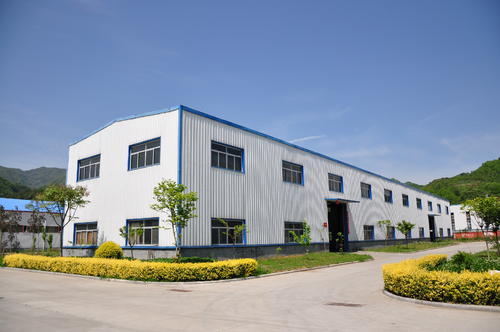
fastener
Fasteners: Due to the long life of roof panels and wall panels made of color-coated panels, the life of fasteners should be consistent with color-coated panels and accessories. In contrast, fasteners account for a small proportion of construction investment, and poor selection of fasteners does not benefit. Therefore, the selection of fasteners is important to consider the long-term performance and aesthetics of the building. The choice of color-coated plate fasteners is relatively wide. There are also self-tapping and self-drilling types made of various metal materials and fasteners such as carbon-free polymer gasket materials to meet steel plate fastening requirements. Fastener materials include carbon steel, 300 series and 400 series stainless steel and aluminum.
Carbon steel fasteners for special nuts such as cast zinc aluminum alloy, nylon and 300 series stainless steel. Fastener manufacturers can also paint fasteners based on roof and wall panel colors.
(Note: There are also carbon steel fasteners that have been electroplated or mechanically galvanized or cadmium, but the coating is too thin (≤0.5mil), it is recommended not to use it on color coated plates). Users should follow the recommendations of steel sheet and fastener manufacturers to apply fastener products. During installation, the fasteners should be tightened moderately to avoid over-tightening and tilting. Improper tightening and loose screws will cause water leakage. Water leakage at the fasteners will make the insulation film wet and cause corrosion under the film. Over-tightening will deform part of the board surface, causing water accumulation and accelerating corrosion.
Equipped with a fastening tool with a depth probe and a suitable RPM speed will help prevent the above problems and avoid the use of impact-type fastening tools.
Sealant: Double-round or three-round sealants are generally used to bond the auxiliary materials such as the roof board transfer part and the trim. Sealants are also used in sandwich panels and auxiliary seals. The sealant should be completely coated in the transfer part. The sealant coated on the surface of the steel sheet will be deteriorated by ultraviolet (UV) radiation. Roof slab makers will provide detailed designs of sealant coating on steel plate overlaps, auxiliary materials and sandwich panels. Can use butyl synthetic rubber, polyurethane, acrylic and silicone as the sealant. Neutral silicone resin is recommended.
The acidic silicone resin reacts with the steel sheet to produce a corrosive, by-product of vinegar. Polyurethane rubber (aliphatic urethanes) is recommended. Butyl synthetic rubber is suitable for areas without external exposure, such as inside joints. It is recommended to use acrylic acid with a solid content of more than 80%. Sealant manufacturers can provide detailed descriptions of different flexible, elastic, UV-resistant and weather-resistant sealant products.
Cutting edge: The cut edge exposes the substrate, plating, and coating to the environment, forming an electrochemical reaction zone to begin corrosion. Cutting edge corrosion occurs to the extent of the thickness of the steel plate, coating system, environment, and exposure angle, that is, vertical (wall panel) and inclined (roof panel).
Drip eaves edge: Due to the influence of rain and condensation, the incision corrosion of the drip eaves is the most serious. The initial sign of incision corrosion is the appearance of tiny bubbles visible on the lower surface of the cut edge. Over time, the bubbles spread to the entire cut edge. For some metal-plated products, bubbles expand at a constant rate until "red rust" occurs on the board surface near the cut edge, and the bubble expansion rate of color-coated products gradually decreases with time, so the corrosion resistance of color-coated boards is better than ordinary coated products.
Side: It is not recommended to cut strips or long cut edges for color-coated boards, because the cut edges are completely exposed to the environment. The building board manufacturer should customize the color plates required for roll processing to avoid cutting edge exposure. The sides of the full-width color-coated board are protected by the aluminized zinc coating and coating.
Roof slab and wall slab edges: Because there is no rain and condensation remaining, the corrosion of this part is weaker than that of drip rims. Full length panels should be used as much as possible to reduce the exposed edges of the cut edges.
Cut-to-length trimming: trimming is also required at doors and windows. For outdoor cutting, a clean, burr-free wall panel should be used around the wall surface. The trimming board should be used to protect the trimming. The hemming process keeps the cut edges out of sight.
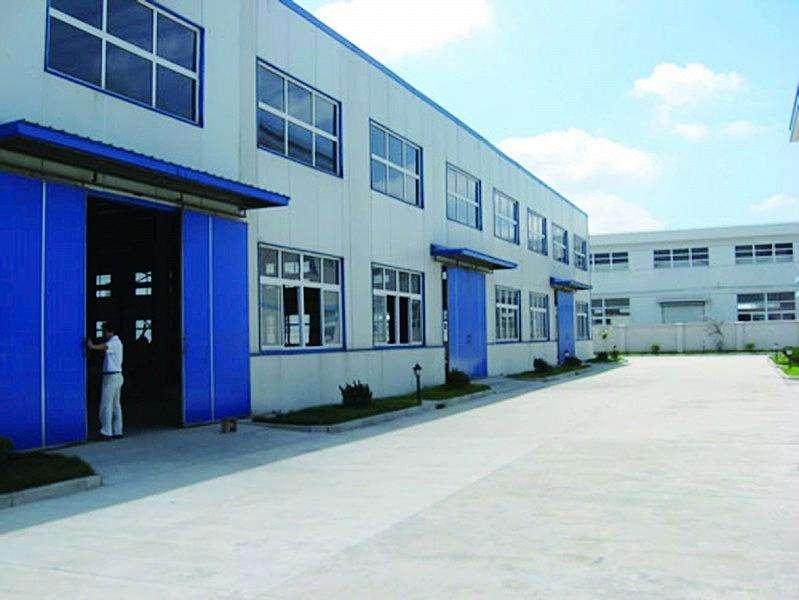
Design matters
With all kinds of seams, connections, ribs and fastening facilities and surface treatments, basically any desired design effect can be achieved. In design, the color-coated board can be matched and coordinated with many construction materials such as concrete, wood, glass in both texture and style. The color-coated board has high strength and light weight, and can achieve special effects that cannot be achieved by using other building materials. Light weight means low load, giving more free space to the selection of slim building elements. The color-coated board has various colors, and it has a large selection in combination with stone, concrete, wood and other building materials. For construction projects that use metal materials and painted, the color-coated board is conducive to matching or adding the required color.
(1) Roof: The good appearance and excellent performance of the color-coated board have awakened the interest of architectural designers and homeowners in showing the roof. The roof no longer just needs to have design features to meet the functions of sheltering from wind and rain. The roof system made of color-coated panels can add the color of other architectural elements, and can obtain the effects brought by the wide range of changes in the roof panel spokes and joints. The slope of the roof of the color-coated board building is relatively steep, with a typical value of 3:12 or even higher, which is beneficial to the rapid drainage of rainwater. Roofs with small slopes are not easy to see. Generally, aluminized zinc light panels are used. For roofs with a slope less than 1/4: 12, it is more economical to use aluminized zinc light panels. Facts have proven that after 20 years of use, they still maintain excellent performance. Roof slabs are usually not placed directly on the roof but placed on a skeleton, which can be made of wood or steel. A 30-pound piece of paper or similar material is usually placed between the roof slab and the support. Part of the color-coated sheet roof is designed in the form of direct contact with the roof structure. Roof panels are usually flat and 10 to 24 feet wide. Small longitudinal ribs can be used for strength and molding. Use penetrating steel fasteners or concealed clips to secure the steel plate to the frame. The roof panels are stacked or welded together longitudinally. Welding methods are divided into batten type and snap-together type. The braid type can be subdivided into traditional box type, cap type and integral type. Welds typically have a height of about 3/4 to 2 inches. The roof panel welded by the bite and the traditional box method is fastened to the skeleton by hidden clamps or iron angles fixed on the weld seam. The integrally welded roof panel is fixed on the skeleton by iron hoop or hidden fasteners. . The movable iron hoop and iron angle design can prevent the roof panel from thermal expansion and contraction.
(2) Wall surface: Building panel manufacturers can provide color-painted wall panels of different shapes in a wide range, and the appearance of wall panels and the required building effects in all areas of the wide front can be completely consistent. High-quality color-coated boards ensure consistent color and appearance of the steel sheet throughout the project. Similarly, because the same materials can be used to minimize the connection and transfer technical problems, parts (trimwork, stops, copings) that have a key impact on the overall design effect can use the same materials, colors and deal with.
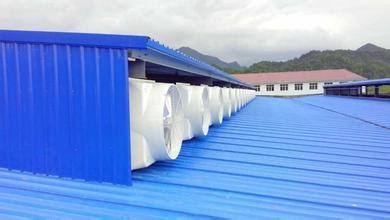
maintain
Maintenance during service can extend the life of prepainted panels. Although the factory-painted building panels have a much longer life than usual painted panels, they still need to be thoroughly cleaned, and no automatic maintenance is required in places where there is automatic rainwater cleaning, such as roof panels. Cleaning can remove the accumulated corrosion and maintain the beautiful appearance of the building without painting. Places that need to be cleaned include brackets, undersides of drip eaves, warehouse door panels, and grooves on the back of drip eaves.
(1) Cleaning: Normally, most of the dust and residues on the surface area of the steel plate can be removed with clean water. Theoretically, cleaning is required at least every six months, and cleaning should be more frequent on coasts with a lot of salt fog and places with heavy industrial dust. For stubborn stains that cannot be washed off, you can use the following methods to clean with a weak detergent or household ammonia. In any case, scrub an inconspicuous small test before cleaning it over a large area. Take a spoonful of "Tide" laundry detergent (or other detergents with a phosphate content of less than 0.5%) and dissolve it in 5 gallons of hot water; or take a cup of household ammonia and dissolve it in 5 gallons of room temperature water. Do not use ammonia and any bleach. Mix; do not mix detergent and bleach without permission. If washing and bleaching is required, use a bleach-containing detergent. Using any of the above detergents, use a saturated cloth, sponge, soft brush or low-pressure spray head to clean the surface of the steel plate from top to bottom to avoid wiping streaks and bright spots. Detergents or industrial detergents are not recommended as they will damage the paint. Water-soluble detergents such as "Omo" are very effective and can be used. If fungus and mold are present, the above methods cannot be removed. It is recommended to use a bleach-containing detergent, such as bleach-containing "tide". The surface of the steel plate after washing needs to completely remove the detergent residue.
(2) Make-up paint: If scratches occur during installation and use, it may be necessary to make-up paint on the defective part. Improper or excessive touch up can damage the entire surface. Scratches that appear inconspicuous at 6 feet are best not repaired because normal wind erosion can cover them. To repair the paint, you only need to repair the missing part of the paint. Before repainting, you need to use alcohol to remove dirt, paraffin and other dirt. It is not recommended to use spray paint to repair large areas, because spray paint does not air dry as well as factory pre-painting. Ask the building board manufacturer or coating supplier for a suitable spray repair system. It is not recommended to use aerosol or spray to repair scratches. The best repair tool is a high-quality 1 / 2-inch or smaller paint brush. If the maintenance is carried out as described above, the color-coated board will maintain its original color for a long time.
Previous article:
China's galvanized sheet in 2019


